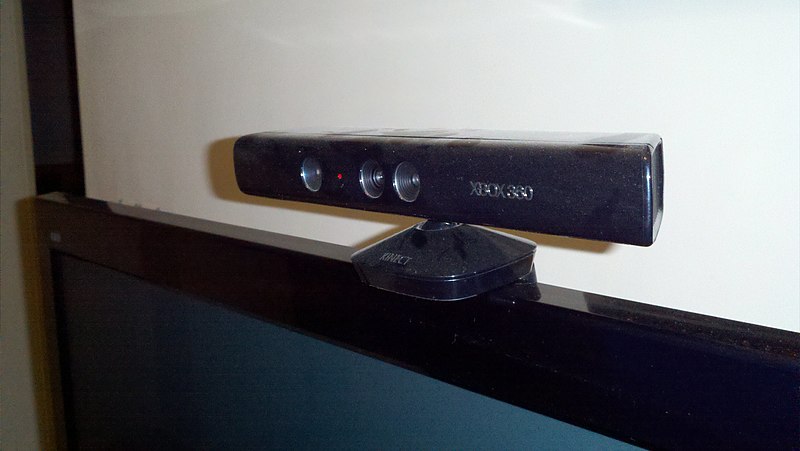
We chat to a Kinect developer about some unconventional uses for the device.
Microsoft’s Kinect has been something of a success at retail since its launch last year, breaking all kinds of records – including the Guiness World Record for the fastest selling consumer electronics device (a category that includes the iPhone and iPad).
Its combination of twin cameras, infrared projector, and powerful on-board processing capabilities enable it to see what you’re doing, effectively – eliminating the need for any kind of controller. The latest dashboard update even allows you to control your Xbox with just your voice, thanks to the Kinect’s included microphone.
With more than ten million of the fancy depth-perception camera controller… things… out there, it’s probably not that surprising to hear that people have been finding all sorts of funky new uses for the device. Instead of just playing games on the Xbox 360, hackers are using it to power lightsaber-wielding Jedi robots, control puppets, and augment reality.
Rather than trying to crush the unintended use of the Kinect, Microsoft are actually embracing this unorthodox activity – as we’ve already seen in Kinect Labs, where innovative “hacks” are actually released via official channels. It doesn’t stop there, though, as Shannon Loftis – one of the lead Kinect developers – explained to us in a recent interview.
Did Microsoft ever anticipate uses for the device outside of motion controlled gaming? Was that something Microsoft assumed was going to happen?
We launched Kinect a year ago, having made a deliberate decision NOT to encrypt the data produced by the device. This was in the hope that people would be inspired, as we were, to experiment and help to advance the cause of barrier-less human-machine interaction.
While we were hoping to see some creativity and invention, and we planned from before launch to support that creativity and invention, we have been blown away by what we’ve seen.
Internally and externally now we refer to “The Kinect Effect,” which is the state where you create a toolset and are amazed and humbled with what the artists and creators make.
What sorts of unconventional uses have you seen the devices being used for?
A diverse group of hobbyists and academics from around the world embraced the possibilities of Kinect and, in a wave of creativity, began developing exciting and creative applications in healthcare, education… even making life easier for the people with disabilities and people recovering from brain injuries.
We have been inspired by the ways the academic community has embraced Kinect technology to create a more interactive, enhanced classroom learning experience. We’ve also seen the technology being used in operating rooms for safer surgeries in hospitals.
We will continue to support this research with the commercial program to give businesses the resources to create even richer experiences.
Are Microsoft looking to license the Kinect technology for use outside of gaming – say, in Medicine or similar?
We’re wildly excited to see what people can do with Kinect in every technological realm.
We’ve embraced the innovation from the community through a Kinect for Windows software development kit for hobbyists and academics last spring. We will launch a Kinect for Windows commercial program beginning early next year – giving businesses across the globe the tools to develop applications that not only could improve their own operations, but potentially revolutionize industries.
To date, Microsoft has signed on more than 200 companies for pilot programs, including Houghton Mifflin and Razorfish.
If people want to start tinkering with Kinect – specifically, for unconventional reasons – where’s a good place to start?
The Kinect for Windows SDK is a free download, and is a great place to start for anyone interested in creatively exploring the natural user interface (NUI) possibilities with the Kinect sensor and related technologies.
What’s next for the clever camera device? What does the future hold?
Internally we’re continuing to develop the capabilities of the Kinect through software enhancement. We’re working on expanding our interaction vocabulary to include more seated options, facial expression reading, more natural speaking options in more languages, and ever-more-accurate people and hand tracking.
But there is so much untapped potential with the Kinect for Xbox 360 platform, as we have seen through the numerous and innovative applications of the technology over the last year. We look forward to seeing how businesses and users alike show us new uses of the hardware in the future.
Should we expect to see something like the Kinect bundled into the next generation Xbox when it’s announced?
Kinect integration will remain integral to our long term strategy, but right now we have nothing new to announce.
For this generation, what sorts of cool experiences should we expect from the next round of software in early 2012 and beyond?
We’re excited by the fact that leading entertainment brands such as Disney, Sesame Street, National Geographic, and Lucas Arts are inspired to bring major new experiences to the Xbox console based on Kinect.
We announced YouTube and Dailymotion have joined Zune and Facebook on the platform, changing the way entertainment is experienced by making it more social, engaging and intuitive.
Another area we are exploring is developing deeper relationships between people and computer-generated characters. You can see this in “Kinectimals: Now with Bears!” with voice interaction, body language reading, and the development of unique relationships based around shared memories and experiences between in-game characters and players. We are just scratching the surface of what is possible with Kinect.







